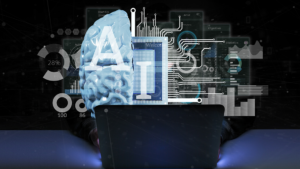

ACL Digital
5 Minutes read
Is Your Business Ready for Hyperautomation? Exploring Next-Gen RPA Trends
In today’s fast-moving digital world, automation is no longer a competitive edge, it’s a baseline. Many companies have already adopted basic bots or task-level tools to streamline operations. But here’s the problem: these disconnected, rule-based systems often hit a ceiling. They don’t scale. They can’t adapt. And they rarely deliver the deep insights or agility that modern businesses need.
That’s where hyperautomation comes in.
Let’s break down what it really means, and why forward-thinking businesses are making hyperautomation a top priority.
What Is Hyperautomation — and Why Should You Care?
At its core, hyperautomation brings RPA (Robotic Process Automation) together with AI, machine learning (ML), process mining, and orchestration platforms to automate full end-to-end workflows—not just repetitive task fragments. It solves the patchwork problem: instead of individual automations that can’t talk to each other, you get a cohesive ecosystem where tasks flow intelligently from beginning to end.
Gartner already put hyperautomation on its “top-10 strategic technology trends” list—and by 2025, about 80% of organizations are expected to have it on their roadmap. That’s not hype—that’s adoption in progress.
Next-Gen RPA Trends Fueling the Shift
Basic automation is no longer enough. Today’s business challenges call for smarter systems—ones that can think, adapt, and learn over time. That’s where next-gen RPA comes in. It blends traditional automation with AI, machine learning, and orchestration tools to go beyond just handling tasks. It connects entire workflows across teams and systems. As we look at what’s driving hyperautomation forward in 2025, one thing is clear: businesses aren’t just speeding things up—they’re building intelligent, responsive processes that evolve with their needs.
What’s Driving Hyperautomation in 2025?
- AI-Driven Automation Traditional RPA could click, copy and paste layered in well with the AI/ML movement, hyperautomation also takes a unique application to those concepts by pushing it far down into automating systems — such as learning from data, or intuiting documents, and even decision making based on consumer behavior. Imagine bots that are capable of understanding human intent or can self-learn based on context.
- Cognitive AI & Decision-Making Imagine agents capable of solving these difficult use cases like learning from unstructured data, anomaly detection, and automatically updating workflows.
- Process Mining & Digital Twins To automate intelligently, you first need to know how things work today. Process mining tools map your as-is workflows and flag gaps or inefficiencies. Add in Digital Twins of your organization, and you can experiment, forecast, and optimize before you ever touch production systems.
- Agentic AI This is the next stage: autonomous AI agents that can make decisions without humans, though still supervised—or at least audited. It’s moving from “agentish” to fully agentic capabilities, letting systems initiate actions based on strategic goal.
- Built-in Security & Compliance With great automation power comes greater risk. Automated workflows often touch regulated or sensitive data, so hyperautomation frameworks now build in access controls, audit ability, anomaly detection, and compliance checks from the start.
What’s Changing in the Real World?
Hyperautomation isn’t just a buzzword. It’s already reshaping how businesses operate:
- Finance and Insurance: Manual handoffs are drastically reduced, approvals process faster orders of magnitude quicker, lower susceptibility to errors due to RPA guided by document understanding
- Customer Service: Personalized customer journeys routing requests, suggesting self-service options, and starting support with no human intervention.
- IT & HR: Set up new employee access—onboarding workflows trigger instantly after credentials are verified. Through 2025, Gartner anticipates that hyperautomation will affect around one-fifth of all business processes in business environments, which is an enormous value opportunity if carried out accurately.
By 2025, Gartner expects hyperautomation to touch one-fifth of all business processes in enterprise environments—creating huge value potential if executed right.
Is Your Organization Ready?
Here’s how to check:
- Do you have scattered automation or unified workflows?
If automations live in silos, like one tool logging invoices and another handling customer tickets—you likely aren’t ready. Hyperautomation needs orchestration: automations that talk to each other. - Are you mining your processes?
If you’ve never mapped how your workflows actually run, you’re guessing at what to automate. That’s like painting over cracked walls, not fixing the foundation. - Can your automation handle unstructured inputs?
If bots fail when data isn’t neat, you don’t have hyperautomation—you have brittle scripts. Real maturity means handling PDFs, emails, chat logs, and noisy human inputs with AI-backed tools. - Security posture and auditability in place?
Does your automation produce logs, flags, and alerts? Can you trace a decision to a human-reviewed checkpoint? If not, you’re leaving blind spots for malicious or unintended behavior. - Executive buy-in and governance?
Hyperautomation often affects many user groups, from HR to finance to IT. You need clear governance and sponsorship so people trust automated decisions and feel part of the change.
A Blueprint to Get Started
Step 1 – Assess and map
Identify your most repeatable tasks, measure how long they take, how error-prone they are, and how much human effort they consume. Start with processes that span multiple tools or departments.
Step 2 – Pilot intelligently
Use process mining to visualize those workflows. Pick one high-impact area—like invoice routing or compliance checks—and build a pilot. If it loops in AI or NLP, make sure you include review and iterative learning.
Step 3 – Build governance
Set up controls: who approves AI decisions, when audits occur, how agents can intervene. Install consistent checkpoints to avoid catastrophic mistakes.
Step 4 – Scale gradually
Expand from one department to others, adding more cognitive layers, agentic capabilities, and orchestration. Attach your automation platform to analytics so you can track cost savings, speed, and accuracy improvements.
Step 5 – Monitor, adjust, repeat
Use analytics dashboards to track bot behavior and user feedback loops. If error rates spike or compliance alerts fire, your systems need retraining or more governance.
Why Businesses That Move First Win
- Agility at scale: Automation that learns and adapts means faster responses to market changes.
- Cost reduction: Gartner predicts hyperautomation will dramatically cut manual workload across departments.
- Customer delight: Smarter, faster, more personalized workflows raise satisfaction and loyalty.
- Future-proofing: Ready for AI trends like agentic bots, document understanding, and orchestration layers.
By flipping the switch from reactive to proactive automation, you free your team to work on high-value projects—not firefights.
Conclusion
Hyperautomation isn’t just “more of the same.” It blends RPA, AI, orchestration, and governance to become a dynamic, self-optimizing operating system for your business.
If your automations don’t currently talk to each other, rely on human intervention, or break when inputs vary—rethink your strategy. With process mapping, security, and governance in place, hyperautomation becomes not only possible—but transformational.
Is your team ready for hyperautomation?
Sources
- https://www.dipolediamond.com/hyperautomation-in-business-advantages-case-studies/
- https://agreeya.com/blogs/solutions/intelligent-automation/major-hyperautomation-trends-to-watch-out-for-in-2025/
- https://www.blueprintsys.com/blog/6-trends-shaping-rpa-in-2025
- https://www.auxiliobits.com/blog/rpa-in-2025-trends-tools-and-what-cios-should-prepare-for/
- https://www.apexon.com/blog/is-your-business-ready-for-hyper-automation/
Related Insights


Death to Prompting! Long Live Programming!

The Architecture of Agentic RAG: Reasoning-Driven AI Systems Explained

The AI Developer’s Guide to Data Formats: TOON vs. JSON and Beyond


